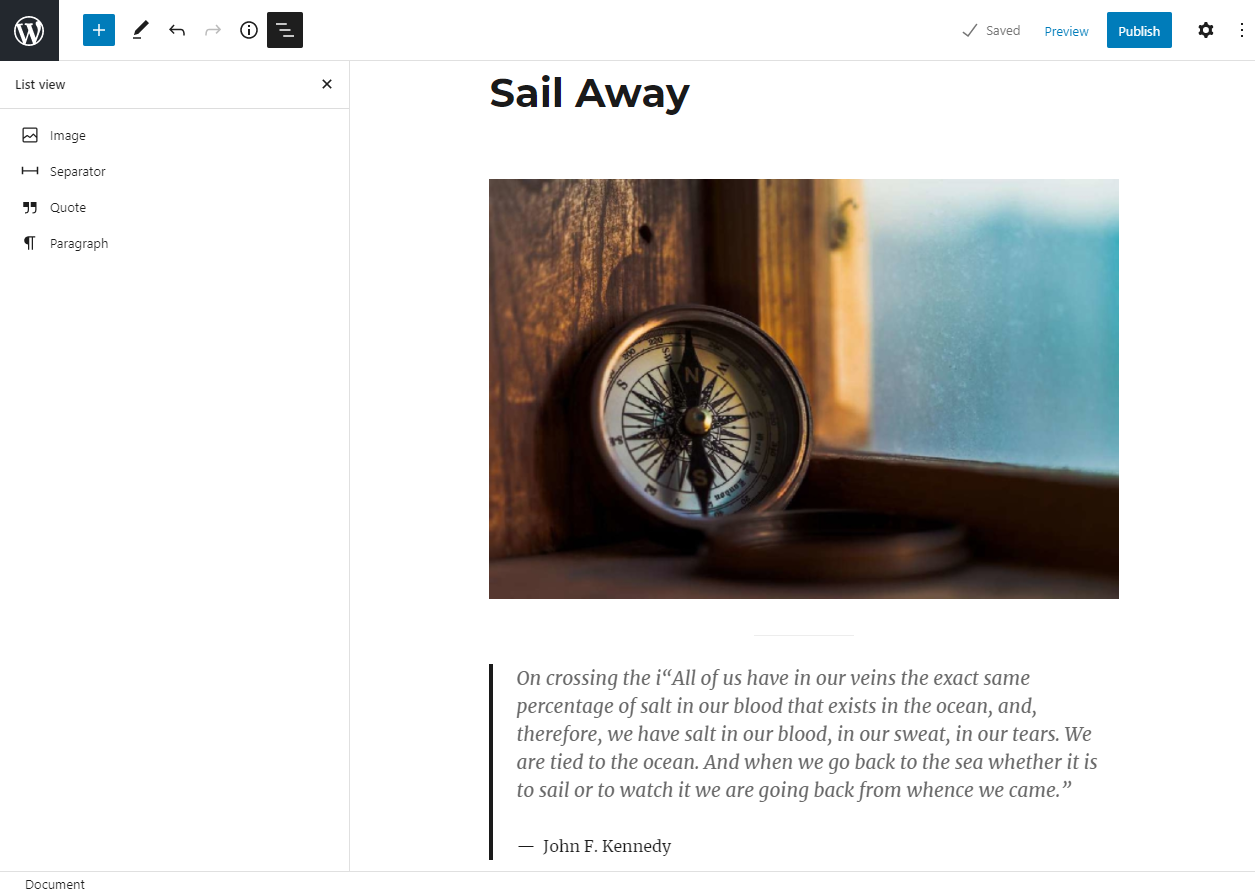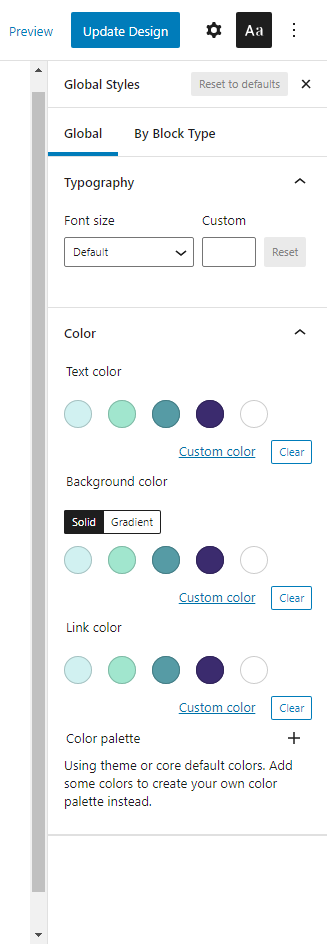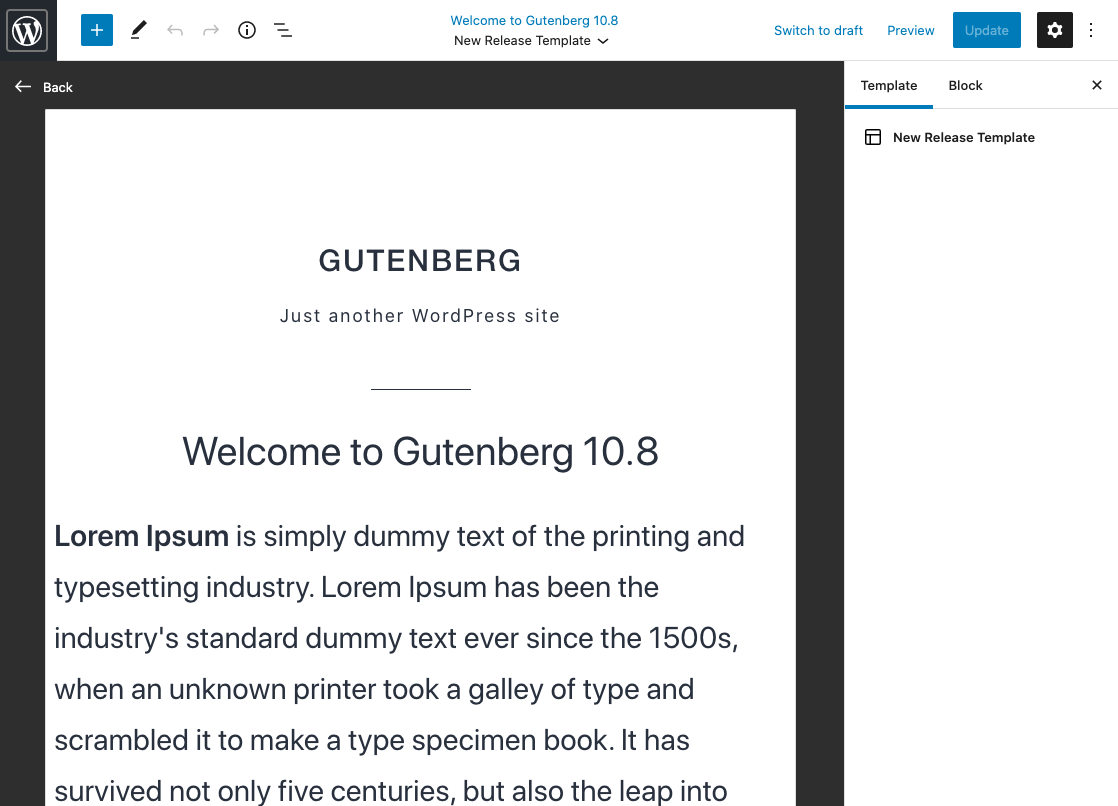Updates on WordCamp 2021, WordPress 5.8 Beta Details, and Gutenberg Enhancements

It's almost officially summer in the Northern Hemisphere. And while some outdoorsy types are packing their Airstreams to do a bit of camping, WordPressians made the virtual hike to WordCamp Europe 2021 last week.
As one of the largest community events in the WordPress ecosystem, WordCamp Europe attracted nearly 10,000 registrees from over 140 countries to their first online forum in 2020 (2021 figures are not yet published, but we're anticipating even bigger numbers). Now that we're emerging from Covid, it will be interesting to see how WordCampers migrate to these meetings worldwide in 2022.
Our staff had a chance to peruse a number of the sessions, and there were some definite standouts. One of the most interesting talks we caught was called "Invisible CMS" by Robert Jacobi (of Joomla fame). There was also a great interview with Marieke van de Rakt of Yoast that was timely and relevant. You can catch a lot of the content on the WordCamp Europe YouTube channel.
During a packed schedule of fireside chats and presentations, attendees were treated to an update on WordPress 5.8, which is currently in Beta. As of right now, the current target for the final release is July 20, 2021.
WordPress 5.8 is expected to deliver a host of new features, including more powerful blocks, enhanced editing capabilities, and other big picture goals like Full Site Editing – which was a focus area at WordCamp. We've covered some of the features we're expecting to see below.
What is Full Site Editing?
OK, so Full Site Editing (FSE) may not be a game-changing new addition to WordPress, but it's another clear signal that WordPress is moving on from editing PHP templates to building websites entirely out of blocks. Full Site Editing is more akin to a "collection" of features that allows you to edit (quite literally) everything on your site. The collection isn't 100% complete, but it's a work in progress for the second phase of Gutenberg.
FSE involves three main components: Template Editing, Block Themes, and Global Styles.
Template Editing
Page Templates are the building blocks of a WordPress site, and they’re composed using PHP. Every theme has its own custom templates such as “Single Page,” “404”, or “Header,” “Footer,” and so on. If you know some HTML and PHP, you can also edit these templates.
WordPress 5.8 is making a bold move by giving users the ability to create their own custom Page Templates by editing their theme template directly. Imagine creating templates entirely out of blocks without having to deal with PHP code.
Don't imagine it: watch it here in this WordCamp Europe online video.
Block Themes
WordPress 5.8 features new blocks for Page Lists, Site Title, Logo, and Tagline. A powerful Query Loop block offers multiple ways to display posts and comes with new block patterns that take advantage of its flexibility and creative options.
Among the new block features, there is one notable one: the Lists View. This is a panel that can be easily toggled, allowing you see all the blocks in a list form and navigate complex blocks and patterns:

Global Styles
Global Styles extend the efforts of Full Site Editing by bringing a higher level of customization to Gutenberg and WordPress. Together, these features enable users to have improved control over aesthetics and layouts beyond the context of single Pages and Posts. Global styles also bring consistency across your website without having to edit individual blocks or pages.
For example, you can select a body background color or change the line-height of all their headings from one place. Styles added to individual blocks will still override the global styles.
The first version of Global Styles has been ported to WordPress core and will be part of the WordPress 5.8 release. Any relevant update will be posted in this GitHub issue on demand.

Additional Highlights in WordPress 5.8
Here are some other cool features we're expecting from 5.8:
- An all-new Widgets screen and updated Customizer, which lets you use any block in your theme’s widget areas
- A new template editor that allows you to create custom page templates using blocks
- Themes that can control and configure styling with a .json file, including layout configuration, block supports, color palettes, and more
- New design tools and enhancements to existing blocks, including more color, typography, and spacing options
- Drag and drop features for Cover backgrounds
- Additions to block transformation options
- The ability to embed PDFs within the File block
- Improvements to how the editor is rendered to resemble the frontend more accurately
The new Duotone filter is a noteworthy addition to 5.8. It allows you to change the color of an image and add various effects. If you love to use filters on your photos, you’ll get a lot of use out of this:

You can read the complete list of new features on the WordPress news release.
What’s new in Gutenberg 10.8?
Gutenberg 10.8 focuses on stability and performance while also introducing enhancements to the Template Editor that enables more design tools for blocks.
More Typography Options
Gutenberg 10.8 comes with more typography editing functions, including font-weight for the heading block and custom fonts for the List block. As with other design tools, you can configure them in your theme.json file.

Template Editor Enhancements
Gutenberg 10.8 also introduces a few enhancements to the Template Editor, improving the overall user experience. Now, the title area in the Template Editor corresponds to the current post title. Also, the appearance of the template details popover has been enhanced with more detailed information and an improved layout.

You can see the complete list of new Gutenberg 10.8 features and bug fixes over here.
Internet Explorer 11
Ah yes. Our update wouldn't be complete without discussing Internet Explorer. It is, as they say, the end of an era.
Or as NPR so elegantly noted, it's "nearing the end of a long and slow death."
As Microsoft continues its planned retirement of this storied browser – a journey that began 25 years ago – support for IE11 is slowly waning. While the final sunset is planned for June 15, 2022, WordPress is deprecating its support for IE this year. So if you haven't already, say your goodbyes.
More to come for WordPress in 2021
The WordCamp world is still abuzz from days of drinking the open source kool-aid, particularly in anticipation of the official 5.8 launch.
In the meantime, if you’d like to test the new 5.8 Beta, you can install the WordPress Beta Tester plugin and activate it. You can find the full set of instructions on how to use the latest Beta version here.
Like everything in the world of WP, it bears repeating that the new features like Full Site Editing are still a work in progress. After all, Rome wasn’t built in a day – and for a CMS that powers over 40 percent of the web, changes need to be carefully tested for mobile performance, security, accessibility, and so on.
What's clear is that the various page-building plugin options for WordPress – such as Elementor, Divi, and Beaver Builder – have ramped up the innovation and certainly inspired WordPress to improve its own block editor. It's important to remember that when Gutenberg first arrived, it was very green and met with an abundance of criticism. WordPress is definitely listening, and working to make content editing even easier for the non-coding folk who don’t want to rely on a developer. While the editor still has a steep learning curve and is clunky in some areas, it seems that Gutenberg is heading in the right direction.
Now, forget the code and fire up your Coleman grill. It's summertime!